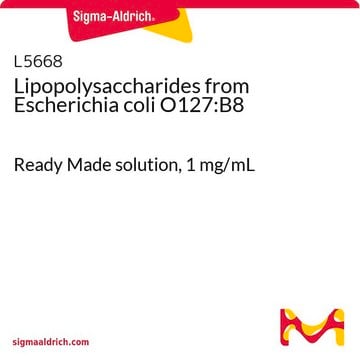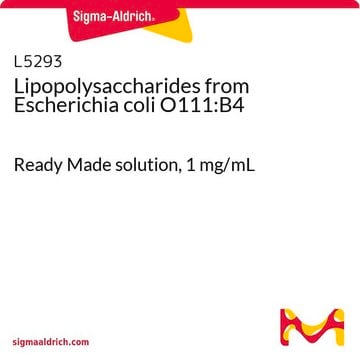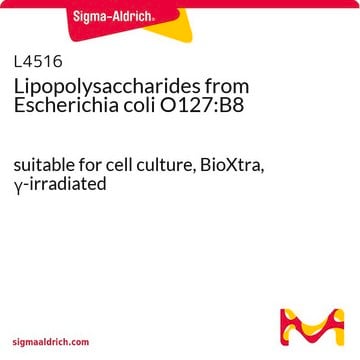Products may be shipped at a different temperature than the recommended long-term storage temperature. If the product quality is sensitive to short-term exposure to conditions other than the recommended long-term storage, it will be shipped on wet or dry-ice. If the product quality is NOT affected by short-term exposure to conditions other than the recommended long-term storage, it will be shipped at ambient temperature. As shipping routes are configured for minimum transit times, shipping at ambient temperature helps control shipping costs for our customers. For more information, please refer to the Storage and Transport Conditions document: https://www.sigmaaldrich.com/deepweb/assets/sigmaaldrich/marketing/global/documents/316/622/storage-transport-conditions-mk.pdf
L6026
Sodio dodecil solfato
BioXtra, ≥99.0% (GC)
Sinonimo/i:
Dodecil sodio solfato, Dodecil solfato, Lauril solfato, SDS, Sodio lauril solfato
Scegli un formato
Scegli un formato
About This Item
Prodotti consigliati
Origine biologica
synthetic (oragnic)
Livello qualitativo
Descrizione
anionic
Nome Commerciale
BioXtra
Saggio
≥99.0% (GC)
Stato
powder
PM
micellar avg mol wt 18,000
Numero d'aggregazione
62
Impurezze
Insoluble matter, passes filter test
Perdita
≤0.5% loss on drying, HV, 20-25 °C
CMC
7-10 mM (20-25°C)
Punto di fusione
204-207 °C (lit.)
Temp. transizione
cloud point >100 °C
Solubilità
H2O: 0.1 M, clear, colorless
Densità
0.496 g/cm3
Anioni in tracce
chloride (Cl-): ≤0.05%
phosphate (PO43-): ≤0.0001%
Cationi in tracce
Al: ≤0.0005%
Ba: ≤0.0005%
Bi: ≤0.0005%
Ca: ≤0.001%
Cd: ≤0.0005%
Co: ≤0.0005%
Cr: ≤0.0005%
Cu: ≤0.0005%
Fe: ≤0.0005%
K: ≤0.02%
Li: ≤0.0005%
Mg: ≤0.0005%
Mn: ≤0.0005%
Mo: ≤0.0005%
Ni: ≤0.0005%
Pb: ≤0.0005%
Sr: ≤0.0005%
Zn: ≤0.0005%
Assorbimento
≤0.05 at 280 in H2O at 0.1 M
≤0.08 at 260 in H2O at 0.1 M
HLB
40
Stringa SMILE
[Na+].CCCCCCCCCCCCOS([O-])(=O)=O
InChI
1S/C12H26O4S.Na/c1-2-3-4-5-6-7-8-9-10-11-12-16-17(13,14)15;/h2-12H2,1H3,(H,13,14,15);/q;+1/p-1
DBMJMQXJHONAFJ-UHFFFAOYSA-M
Cerchi prodotti simili? Visita Guida al confronto tra prodotti
Descrizione generale
Applicazioni
Caratteristiche e vantaggi
- Tested to confirm low levels of heavy metal contamination, ensuring suitability for various applications
- Tested for trace levels of Anions and Cations
- High-purity product ideal for biochemical research purposes
Altre note
Prodotto comparabile
Avvertenze
Danger
Indicazioni di pericolo
Consigli di prudenza
Classi di pericolo
Acute Tox. 4 Oral - Aquatic Chronic 3 - Eye Dam. 1 - Skin Irrit. 2
Codice della classe di stoccaggio
11 - Combustible Solids
Classe di pericolosità dell'acqua (WGK)
WGK 2
Punto d’infiammabilità (°F)
338.0 °F
Punto d’infiammabilità (°C)
170 °C
Dispositivi di protezione individuale
Eyeshields, Faceshields, Gloves, type P3 (EN 143) respirator cartridges
Scegli una delle versioni più recenti:
Certificati d'analisi (COA)
Non trovi la versione di tuo interesse?
Se hai bisogno di una versione specifica, puoi cercare il certificato tramite il numero di lotto.
Possiedi già questo prodotto?
I documenti relativi ai prodotti acquistati recentemente sono disponibili nell’Archivio dei documenti.
I clienti hanno visto anche
-
How is shipping temperature determined? And how is it related to the product storage temperature?
1 risposta-
Utile?
-
-
How can I determine the shelf life / expiration / retest date of this product?
1 risposta-
If this product has an expiration or retest date, it will be shown on the Certificate of Analysis (COA, CofA). If there is no retest or expiration date listed on the product's COA, we do not have suitable stability data to determine a shelf life. For these products, the only date on the COA will be the release date; a retest, expiration, or use-by-date will not be displayed.
For all products, we recommend handling per defined conditions as printed in our product literature and website product descriptions. We recommend that products should be routinely inspected by customers to ensure they perform as expected.
For products without retest or expiration dates, our standard warranty of 1 year from the date of shipment is applicable.
For more information, please refer to the Product Dating Information document: https://www.sigmaaldrich.com/deepweb/assets/sigmaaldrich/marketing/global/documents/449/386/product-dating-information-mk.pdfUtile?
-
Filtri attivi
Il team dei nostri ricercatori vanta grande esperienza in tutte le aree della ricerca quali Life Science, scienza dei materiali, sintesi chimica, cromatografia, discipline analitiche, ecc..
Contatta l'Assistenza Tecnica.





